I just got a new infrared thermometer for Christmas that I want to use to make chocolates and candies. I have gone through so many digital instant read thermometers that have been dunked in chocolate, dropped or soaked that it was time for something new.
It has an adjustable emissivity setting but I'm having a hard time finding information on the emissivity of chocolate and melted sugar/caramel. I'm excited to get started but I know the accuracy is highly reliant on using the correct emissivity setting. Am I just looking in the wrong places or do people not usually use infrared thermometers in the kitchen?
First, congratulations on your new toy/tool. I personally use one in my own kitchen and for my own chocolate making. But only for certain items. And only after verifying them with a contact thermometer that I have personally calibrated beforehand.
And that sums up my entire answer to your question. If you notice, I didn’t mention emissivity at all. The reason, in short is summed up in this disclaimer that you can find on nearly every emissivity table.
"The accuracy of the following figures is almost impossible to guarantee as the emissivity of a surface will not only alter with regard to texture and color but also with its actual temperature at the time of measurement"
Nice, huh? What I take away from this is that the table is good for one thing and one thing only. Looking up to see if your surface is close to 1.0. If It is, great, you have a CHANCE of using your IR thermometer. If it isn’t, then just don’t bother because the value is worth the paper it is printed on.
Ok, before we get much further, I would be negligent if I didn’t digress and actually define some of the terms and technical jargon that I’m using. First off, the potentially too technical version:
"Emissivity is a measure of the efficiency in which a surface emits thermal energy. It is defined as the fraction of energy being emitted relative to that emitted by a thermally black surface (a black body). A black body is a material that is a perfect emitter of heat energy and has an emissivity value of 1. A material with an emissivity value of 0 would be considered a perfect thermal (IR) mirror.
For example, if an object had the potential to emit 100 units of energy but only emits 90 units in the real world, then that object would have an emissivity value of 0.90. In the real world there are no perfect "black bodies" and very few perfect infrared mirrors so most objects have an emissivity between 0 and 1."
If you get that, great and wonderful. If not, let’s break it apart a little. Infrared thermometers read the incoming infrared radiation that a surface gives off (emits) and translate that to a temperature you can see. Most people don’t think of surfaces emitting radiation (they do). On the other hand, most people understand that a surface can be reflective. Mirrors are reflective. Shiny metal pots are reflective. If you have the chance of seeing yourself reflective in a surface, then it’s reflective. And if you have that down, then thinking the opposite direction tells you if a surface ‘emits’ well. For our discussion, reflector and emitter are synonyms. The real world use of this goes like this: “can I see or sort of see myself in that thing I want to measure?”. A mirror? Sure can! Then it is a reflector and if it is a reflector it can’t be a good emitter. It’s that easy. Where it gets difficult (sort of) is a when a surface is ‘sort of’ reflective. But really, it’s still easy. “Is that glass kind of reflective?” Yeah, kind of. Then it will only be sort of good at emitting and since we need only really great emitters then that surface in question is no good for an IR thermometer.
"If you were to point an infrared thermometer with fixed emissivity at the side of a stainless steel pot filled with boiling water, for example, you might get a reading closer to 110°F than 212°F. That’s because the shiny metal is better at reflecting the ambient radiation of the room than it is at emitting its own infrared radiation."
And really, that’s all the tables are really good for. Giving you a quick idea whether you have a good emitter or not. There are a few curve balls in there. Glass blocks infrared so all bets are off there. And in theory water emits well, but my experience says the pot it is in and how close it is to boiling changes your readings a lot. And gravel. It’s not reflective. Should be a great emitter…but practice rules the day. It reads somewhere around 0.3. Like it is a polished surface. Go figure.
Let’s get to the practical now, like they did for that gravel. You have a IR thermometer with an adjustable emissivity setting. Great. You can adjust (or calibrate it) for a given surface (the stainless steel pot above). But you would not do it by looking up the value in a table. They make a big deal about the lack of accuracy of those tables remember? You would do it by placing a probe on the surface and then pointing your IR thermometer at it (but not on the tape) and changing your setting until the two readings are close enough for you. Just like this.
But now the chemist in me rears its head. And maybe you caught it too. How do I/you know the probe is any good? Well, you HAVE to verify it. How? Well, you put in on something you know the temperature of. For you (and me) there are two things in your kitchen you can count on. Ice and boiling water. 32 F and 212 F (or a little lower if you are at elevation – google it or ask me). I picked that thermometer you see because time and again it reads within one degree at both ranges out of the package every time I test one. That’s why I offer it. So you don’t have to calibrate or verify it if you don’t want. Because honestly, most people don’t think to or even know they should, and I know and accept that. But now you do, and should.
This all comes back around to wanting the emissivity of chocolate. But hopefully, by now you see you were looking for something that even if you found it, would do you little good. What you want to do is this.

Do they match (you verified that other thermometer, right?)? If so, then you are done. If not, adjust the emissivity setting until they do. That’s all there is to it. Oh, and my opinion (again worth the paper it’s printed on)…chocolate. Sure. Melted (reflective?) sugar (in a shiny pot)….maybe but I wouldn’t hold my breath. But you were going to verify it anyway.




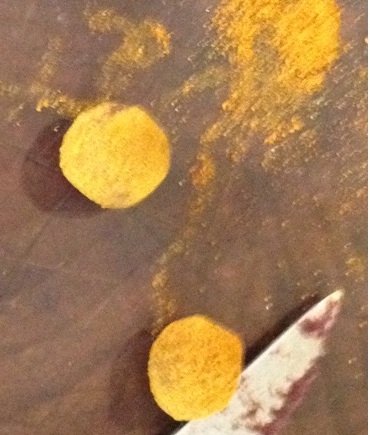
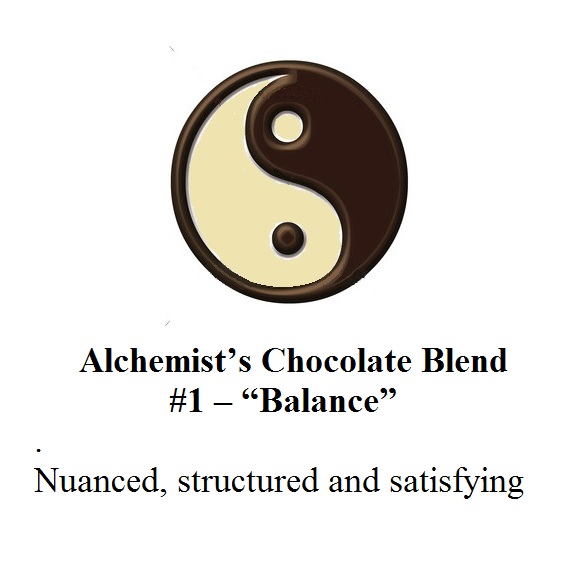
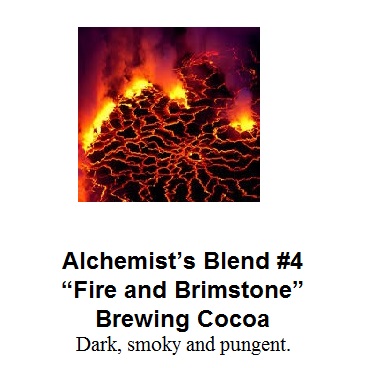

 Finally, keep an eye out for a bunch of new hobby grade molds. Great for getting started and for gifts.
Finally, keep an eye out for a bunch of new hobby grade molds. Great for getting started and for gifts.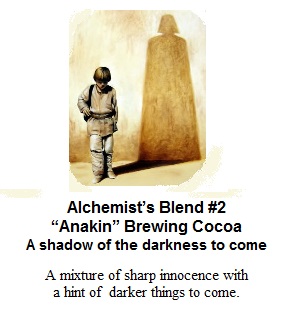
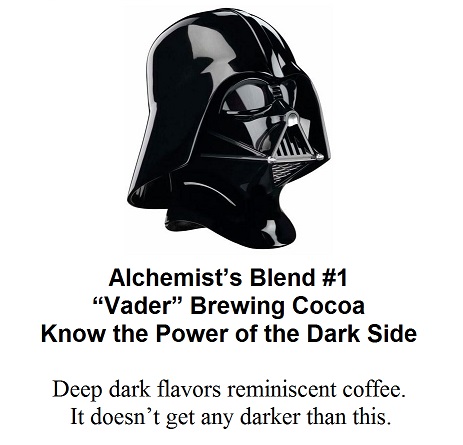 As I am wont to do, I have gone off and broken a couple of the ‘rules’ for chocolate. I’ve blended wonderful single origin beans. I have roasted them VERY dark. I have ground them extra fine. And I have produced a dark, tempting elixir. And make no mistake; it is stronger than most of the ‘lighter’ brews both in color and flavor. Strong roasted notes, not unlike coffee. I love coffee, and I when I’m not sipping coffee, this fits the bill just great. But it’s not just ‘dark’. And it certainly isn’t burned. It’s full of spice and chocolate notes. And lest you fear I’ve roasted all the goodness out of it, (and yes, this is just anecdotal evidence) the ‘buzz’ is still there. Fully! And if anything, it may be greater than the lighter stuff since it is extracting more (just note that alluring color).
As I am wont to do, I have gone off and broken a couple of the ‘rules’ for chocolate. I’ve blended wonderful single origin beans. I have roasted them VERY dark. I have ground them extra fine. And I have produced a dark, tempting elixir. And make no mistake; it is stronger than most of the ‘lighter’ brews both in color and flavor. Strong roasted notes, not unlike coffee. I love coffee, and I when I’m not sipping coffee, this fits the bill just great. But it’s not just ‘dark’. And it certainly isn’t burned. It’s full of spice and chocolate notes. And lest you fear I’ve roasted all the goodness out of it, (and yes, this is just anecdotal evidence) the ‘buzz’ is still there. Fully! And if anything, it may be greater than the lighter stuff since it is extracting more (just note that alluring color).


